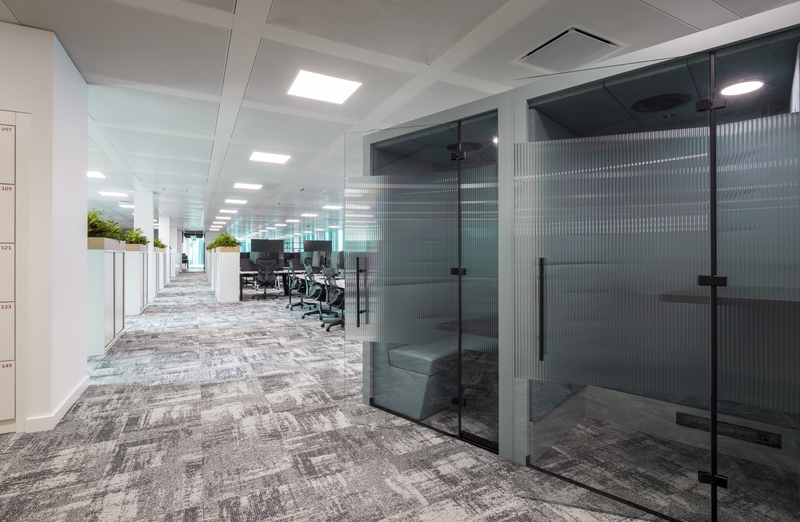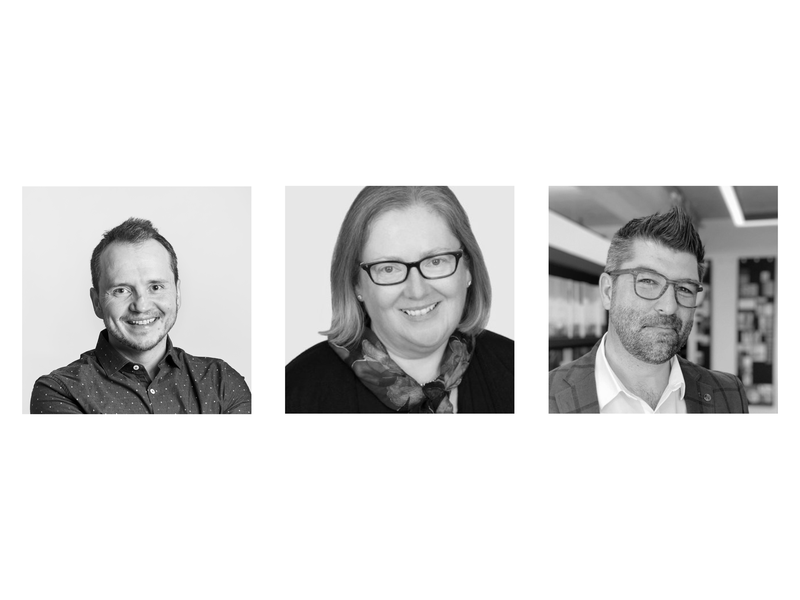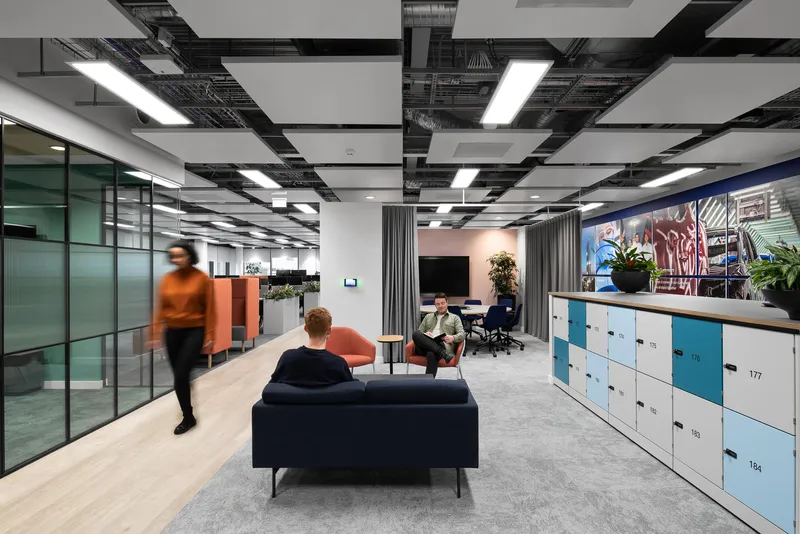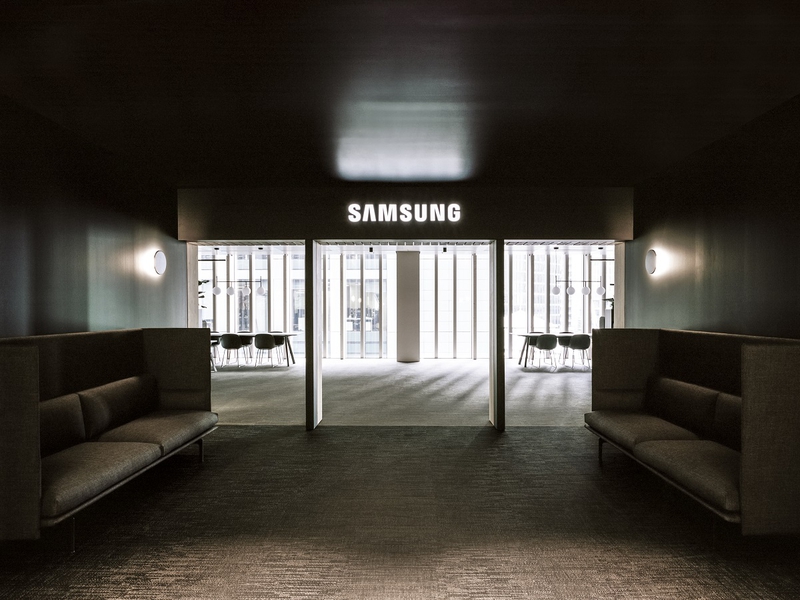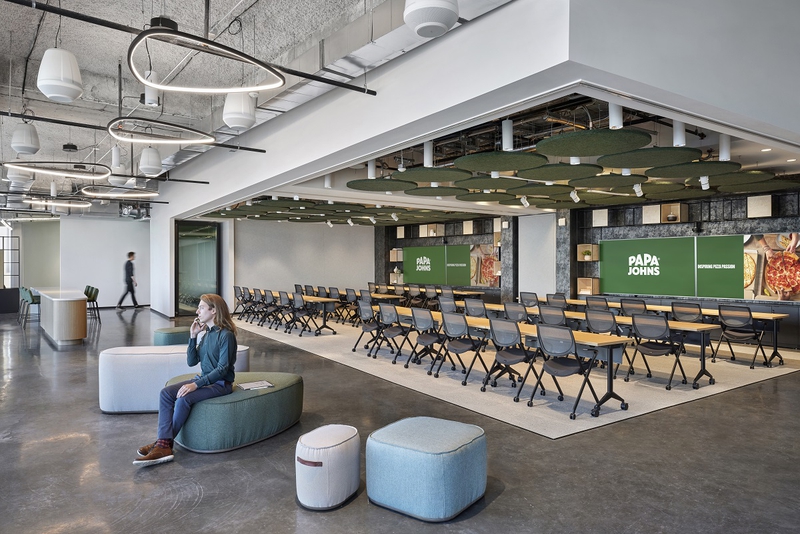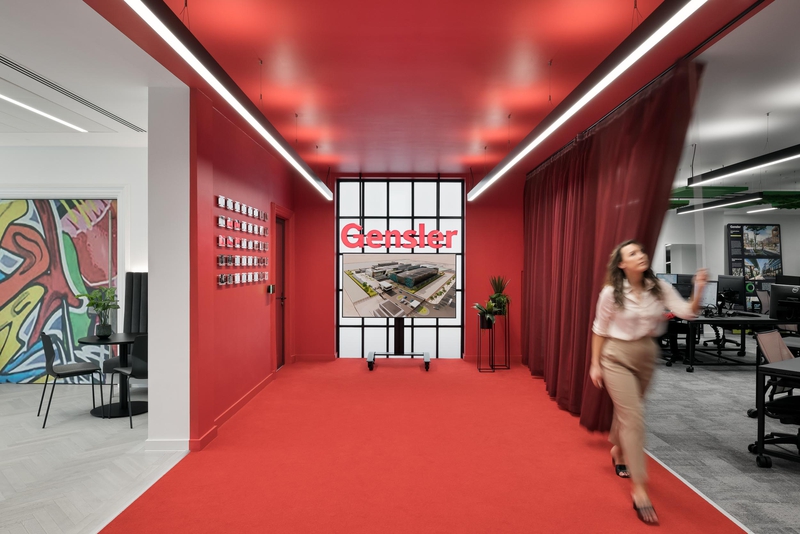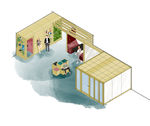Return to the Workspace Solutions, Tendances du secteur, Actualités de l'Entreprise
LONDON, UK - 15/11/2022 - Flex-washing, a term which has emerged in recent months, is an organisation’s claim to provide a ‘flexible working environment’ whilst simultaneously putting out a set of directives controlling this flexibility. This is resulting in a misalignment between employee expectation and their real experience; they are misled by the broad brush of ‘flexibility’ to believe they will be empowered to make their own choices, only to be confronted with the selective and restrictive ‘flexibility’ that is permitted.
In Fortune’s recent insight on the subject, Holger Reisinger observes that ‘63% of employees prefer a hybrid work setup that provides flexibility, yet a clearly defined standard of what that means does not exist.’
So, is a definition of flexibility needed in the workplace? Recently, we sat down with 3 workplace experience experts from PagerDuty, Genentech and IA Interior Architects to get their thoughts. Ian Reves, Design Director at IA, believes that a definition is the starting point for a more authentic flexibility within organisations.
“One thing that we have definitely noticed again and again in our practice is the definition of the words that you use to describe the thing that you're talking about, really needs to be owned by the people you're working with,” he observes, “Because particularly when you're dealing with different recruitment pools, you have to figure out what the standard definition the person you're talking to is using. If the person you're talking to is a 20-something just out of college or university, I guarantee you their definition of flexibility is wildly different than a typical white collar workforce member, right? Step one, define it. If you can't, you're working with a potential misinterpretation.”
Indeed, the necessity of defining flexibility for employees is key to avoid the growing flex-washing phenomenon and realise the effective attraction and retention of talent. A problem arises for organisations; how to define flexibility when everyone’s interpretation of the term is different?
“But really, it is about maximizing flexibility and choice for individuals.” says Nathan Manuel, Director of Workplace Experience at PagerDuty, “We have a program called Distributed by Design, and that program lays out a number of different concepts that allow people to make decisions about what's best for them. Our job is to think about how to reduce friction for our individual employees and this may mean different things to different people and different geographies. We aren't mandating that people come back on certain days, a certain amount of days per week, but what we're trying to do is to magnetize the space, hold events or different types of engagements that pull people in. It's us, trying to create a really excellent employee experience.”
At PagerDuty, employee choice and feelings are valued when crafting a considered return-to-work policy, steering away from a ‘mandate’ when creating attractively flexible conditions, closely aligned with what employees are looking for. And alignment is important, with some individuals feeling lost with a flexible policy which lacks direction and a togetherness, highlighting the question; how to find the balance between stifling control and impoverished detachment? Tina Facos-Casolo, Principal Architect at Genentech, describes a solution that was effective in the tech company,
“It's not anything that's mandated, but it is something where we're looking at it at a very, very low, individual level, team level, department level to make those decisions about how people come back,” she explains “We do a lot of surveys, we always have, and what we're hearing is that because of our technology changes and things that we provided to people during the pandemic, people had gotten very comfortable about being home. And I think there wasn't a day where people said, ‘Okay, today's the day everybody's going back full time.’ That that's not what we're all about. That's where team agreements come in. The groups have to decide, how often do people need to come together, for what purpose do we come together, what is the driver?”
“It's really about achieving autonomy down to the last level so that you can give [individuals] the choice,” observes Russell Kingston, Managing Director of Spacestor USA.
An organisation, therefore, can develop a truly flexible employee experience through listening to their people and acting on what they hear. Flexibility is not a one-size-fits-all issue, and it is important to remember that, as the concept grows and progresses, it is impossible to achieve a universal solution which works every time.
The crucial discovery stage, which is the present, is exciting, stimulating, “And I think you just think about it as kind of evolution. It's going to take a while I think, for everybody to just settle into how they do want to work going forward and have the companies be willing enough to really listen to their people. We're all going to be matching our environment to the needs of our people in a way that, we are much more sensitive now, than we might have been a couple years ago,” Tina adds optimistically “So I think it's very exciting to see what we have ahead, and I think we learned a few things along the way.”
Ian agrees, “In my 20 years of practice, this is the most thrilling time to be reconceiving the workplace because we've never had this freedom before. We've never had the freedom to go to our clients and say, how is it you really want to work? Being able to ask that question has been hugely freeing for our practice.”
“And so, as we move away from thinking about the workplace as physical facilities with a real estate response, we think about it more as this employee experience, we think about people as people, we're empathetic leaders and we adapt design to those people in that way,” concludes Nathan, summarising “And if we can create a really great employee experience for other people, we have to remind ourselves we're creating that for ourselves and for our companies as well. Let's make sure we're implementing that in the future and really empowering those employees to do their best work.”
Flex-washing, a problem emerging from the need to attract talent and the greater premium put on flexibility by potential employees, post-pandemic. Maximizing flexibility whilst being closely aligned and truly in tune with employee feelings, an evolving solution to attract and retain talent in today’s corporate world.
###
About Spacestor - Spacestor is the creator of architectural, space-defining furniture that seamlessly blends California cool with London Design. With a legacy spanning three decades, Spacestor first established themselves as a key innovator of workspace furniture and design thinking in the United Kingdom, but today, the company holds offices in London, Manchester, Los Angeles, Philadelphia, Chicago, and New York City - giving them a unique position to observe and learn from some of the most creative and successful global companies. From their long-term engagements with clients like Google, JP Morgan, and Pfizer, Spacestor knows how a sustainable workspace environment drives organizational goals; whether building great team culture in a hybrid world or exciting people to be back in the office again.




